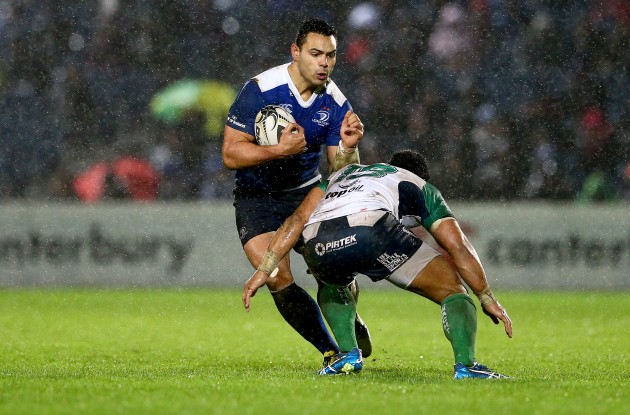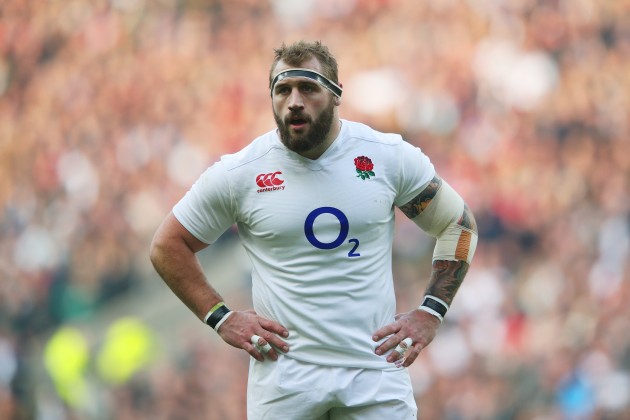The poor handling of the Marler case, the Chiefs' va-va-voom backs, Stuart Hogg's stellar Six Nations and the residency rule that needs tightening are all covered
Rugby cannot be above racial slurs
The alleged ‘Gypsy boy’ incident between Joe Marler and Samson Lee, and its subsequent handling, remains a blemish on this year’s RBS 6 Nations. The comments themselves were damaging enough, particularly having been heard on mainstream TV in the middle of the day, but the way in which the incident has been handled is arguably far more acrid.
The reality is that rugby is out of step with society when it comes to issues of this nature. This is an accusation that rugby, as a whole, will find difficult to take. After all, rugby does have a superiority complex when it comes to matters of ethics. Rugby is a game which takes pride in not feigning injury, minimising foul play and providing a space where all genders and races can openly share a pint and a chat after the game.

Cloud hanging over: Joe Marler has continued playing with a discplinary hanging over him
But for reasons unknown, some of rugby’s professional bodies deem a comment, which contravenes the Equality Act of 2010, suitably atoned for with an apology at half-time. The debate shouldn’t even centre on Lee’s response to the comments. It doesn’t matter if Lee wasn’t offended by Marler’s words, it was probably water off a duck’s back – an 18st duck with a 75in neck sitting on top of it. The consideration must be that a ten-year-old boy or girl from a travelling community isn’t exposed to comments of this nature.
Nobody wants Marler banned for 50 weeks and locked up in Belmarsh, but what is required is an acceptance that something inappropriate has occurred and that a suitable outcome is delivered. It is unfair to label this situation a media witch-hunt; it is a matter of rugby fitting in with societal norms, not the other way around.
Chiefs are moving rugby forward
March saw the Chiefs, of Waikato not Exeter, deliver some of the finest attacking play that Super Rugby has ever seen – and that’s saying something. It’s misleading to call it rugby – the truth is that they are almost playing a new sport. Such is the variety of passing and offloading that it verges on a heady fusion of rugby and basketball.
Kiwi rugby has always specialised in passing before contact, but the Chiefs are currently moving up a level. Against Western Force, they frequently executed what can only be labelled as a traditional basketball pass, where the player’s feet and shoulders were aimed directly at the supporting player – the ball was then passed with one hand stabilising the ball and the other delivering the momentum. The result being hugely accurate short-range passing.

Different level: Damian McKenzie and the Chiefs have been playing sublime rugby
The Chiefs are also the world’s finest exponents of the ‘through-the-back’ reverse offload – where the three contact points of the wrist, palm and fingers lock the ball in the perfect position for an accurate offload. Combine this ability to pass with a squad of players who seemingly have sweat glands that are able to seep Pritt Stick, and you have the model for the next decade of Kiwi rugby.
This paradigm shift doesn’t merely rest with handling either, but also with player selection. Damian McKenzie, the Chiefs full-back, is currently carving up Super Rugby, yet he stands at just 5ft 7in and weighs a mere 12st 7lb. If you want to see the way rugby will evolve over the next decade, watch the Chiefs.
Hogg the right choice for Six Nations Player of the Tournament
It was a wonderful moment when Stuart Hogg was named 2016 Player of the Tournament. It represented a shift in the appreciation of rugby skill-sets and a return to attacking rugby getting the nod over robustness – the previous five years’ awards having been largely won by defensively-orientated players such as Paul O’Connell (2015), Leigh Halfpenny (2013), Dan Lydiate (2012) and Andrea Masi (2011). Rugby needs to once again reward the 50m line break and the ability to beat, not merely collide, with a defender – both of which Hogg produced at will during March.

Jumping: Stuart Hogg was a worthy winner of the Six Nations Player of the Tournament
The reality is that Hogg wasn’t the most defensively solid full-back in this year’s tournament – that would be Liam Williams or Mike Brown. He wasn’t the most comfortable under the high ball either – that award would go to Anthony Watson, Liam Williams or Dan Biggar. But Hogg was certainly the most feared individual with the ball in hand, and that is a rare trait in northern hemisphere rugby. Hat tip, Mr Hogg.
Residency rule is tarnishing legitimate players
After endless scrum resets, rugby’s residency rule has long been the game’s most pressing issue. The reality is that a three-year residency is nowhere near long enough to qualify for Test status in an adopted country. It’s ludicrous. Pretty soon you’ll probably be able to go on a fortnight’s holiday in Disneyland Paris and play for France the week after – probably performing better than the current players in the process. But the real problem is that the rugby faithful’s lack of support, and trust, in the current residency rule is tarnishing those players who have a right to play for a country.

Justifiable claim: Ben Te’o has a legitimate claim to play for England, if selected
The prime example being Ben Te’o. England‘s reported interest in the Leinster centre sparked a misplaced social media backlash. Those lashing back were largely quoting the residency rule – but Te’o has an English mother. He has as much right to play for England as any of the current English squad – more than some in fact. The residency rule needs to be changed if only to protect those who can justifiably play for a nation.
Rugby advertising needs a new brief
Rugby, especially in the northern hemisphere, has a bit of an image problem. This year’s Six Nations, in particular, received criticism for the style of rugby that was played. It was rugby where muscle mass has taken precedence over ability. But this image problem doesn’t exist purely on the field, it permeates deeper into rugby culture – particularly advertising and brand engagement.

Pumping tin: Rugby prides itself on its macho culture
The social media feeds of Test teams, and clubs, are dominated by players in the gym. Twitter is regularly bombarded with tweets of player bench-pressing and deadlifting stupid amounts of tin in the gym – but we rarely see a rugby ball. Digital content tends to focus on players repeatedly flipping giant tractor tyres or pulling ropes – I’m yet to see a team lift the Rugby World Cup having excelled at flipping 600lb of moulded rubber.
The problem isn’t social media’s alone, rugby advertising has fallen into a similar trap. Advertisers are obviously constrained in the amount of ‘rugby’ that they can show, due to image rights. But why do advertising campaigns have to focus on the size of players’ biceps and chests, and not on the dexterity of their hands and feet. When was the last time you saw a rugby ad that didn’t feature a player with his arms folded, flexing his biceps? Rugby needs an image change.
For the latest Rugby World subscription offers, click here.





